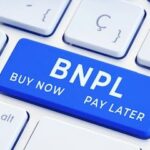Almost every item or food you have consumed in the past 24 hours has been grown using fertilizer. Even meat products are part of the fertilizer chain, as the nutrients from these crops are used to grow animal feed. In this article, we explore why multi-billion dollar fertilizer is a growing industry in more ways than one.

The fertilizer industry not only puts food on our plates, it is also a growing market. Investors who take the time to research leading fertilizer companies and understand the market forces and global factors driving industry growth will reap the rewards. We also explore ICL, one of the world’s most innovative fertilizer manufacturers.
Fertilizer and food security
People in North America, Europe, and other wealthy regions of the world have enjoyed unprecedented food security for generations, thanks to the post-World War II agricultural “Green Revolution.” Agricultural mechanization and advances in synthetic fertilizers and pesticides have filled supermarket shelves with affordable foods and created a new consumer food culture. In a short period of time, the average person in Western society had a vast array of food choices to the point where weight gain and obesity became a problem. Then a hugely profitable diet industry emerged.
In recent years, global food security has suddenly seemed uncertain. A rapid chain of events, including logistical challenges due to COVID-19 lockdowns, temporary glitches in deliveries from suppliers to retailers, and small outbreaks of panic buying. The unprecedented sight of empty supermarket shelves shocked consumers. Extensive droughts, commodity crises, the devastating effects of various conflicts and transport accidents, inflation, and rising prices of fuel and fertilizers are driving up the cost of basic staple foods.
In case you missed it: Sustainable agriculture with CRF (controlled release fertilizer): A game-changer for crop productivity

We all depend on a complex and interconnected global food supply chain for our daily survival, but it depends on several basic building blocks, one of which is It’s fertilizer. Without effective crop nutrition, farmers can only provide a fraction of their current crop yields. Anyone who has ever grown vegetables, potted plants, or flowers in a window box understands the need for nutrients. What most people never think about is the sheer variety and amount of fertilizers that the world’s agriculture uses and requires each year.
In 2022, the International Fertilizer Association valued the global fertilizer industry at $290 billion (with $90 billion in capital expenditures for new production capacity). This accounts for hundreds of millions of tons of fertilizer products, most of which are derived from the “nutrient trinity” of nitrogen (N), phosphorus (P) and potassium (K). Secondary macronutrients and micronutrients cover a variety of other elements that meet the needs of specific plants.
Current challenges to food security
Historically, food security has been precarious. Only recent generations (at least in developed countries) can benefit from large-scale industrialized agriculture. However, challenges to food security always exist, and the great abundance of affordable food should not be taken for granted. Climatologists say the world is getting warmer and extreme weather events such as droughts, floods and storms are all having an impact on agriculture.
In case you missed it: 20 Best Homemade Fertilizers for Money Plants: DIY Recipes and Application Instructions

Another challenge to food security is population growth. The United Nations estimates that there will be at least 10 billion people on Earth by the end of this century. This, coupled with the urbanization phenomenon associated with the migration of rural populations to cities and the reduction of fertile farmland area, can place a significant strain on food supplies.
Hunger and social and political stability around the world, especially in developing countries, depend on the availability and affordability of key staple foods such as bread, cooking oil, beans and pulses. The moment purchasing necessities becomes difficult, social unrest is likely to follow. Food security is closely linked to political, social, national and regional security, and in an era of globalization these impacts can be felt all over the world and wherever you live. there is.
The role of fertilizers in global food security
Advanced fertilizers that enable sustainable precision agriculture are one of the most important tools for achieving food security. Recent fertilizer innovations such as slow-release granules with biodegradable polymer coatings are amazing, but equally exciting are the advances in fertilization techniques (soluble fertilizers added to irrigation water) and sprayed directly onto crops. Advances in cutting edge foliar fertilizers and nutrients. It is absorbed through the leaves. These new crop nutrition products are designed to be used in conjunction with high-tech soil sensors and can be deployed by drones or robots.
One of the main benefits of these next-generation fertilizers is that they allow farmers and agronomists to solve the problem of environmental pollution from runoff and crop damage from fertilizer burn. Sustainable fertilizers offer new opportunities to cultivate marginal land and reverse desertification, especially when producers use digital platforms to create customized crop nutrition plans.
In case you missed it: Fertilizer application rates per acre: Explore fertilizer application rates for different crops

I believe that companies that can produce fertilizers that are sustainable, affordable, and enable precision agriculture with low environmental impact have real potential to grow their market share over the next decade. I’m thinking. One company ICL Groupis the world’s leading specialty minerals company and is leading the way. I have been following them for years because they are pioneering many new trends in agriculture and other fields. I think of them as a kind of “signpost company” that indicates the future direction of the fertilizer industry as a whole.
One of the really interesting things that ICL is doing is recycling waste phosphate to make high-quality products. fertilizer puraloop. The company’s plant in Anfeld, the Netherlands, processes secondary sources of phosphate that were previously designated as landfill. This special recycling process reduces dependence on mined phosphate rock, a finite natural resource.
ICL has also established a new numerical grading system to display on fertilizer products. A numbered grading system indicates the overall carbon footprint associated with each fertilizer, allowing farmers to make informed choices about environmentally responsible purchases. We hope this becomes an industry standard.
investment outlook
Everyone has their own investment criteria, but when I evaluate fertilizer companies, I look at their commitment to sustainability, proven access to mineral reserves, and culture of innovation and technology within the company. , and are looking for a continuously expanding and diverse product range. Once we find a company with these qualities and attributes, we begin a more in-depth technical analysis. One thing to keep in mind is that many large fertilizer companies also operate in other areas, which impacts profitability.
In case you missed it: 9 Best Multipurpose Fertilizers in India: Top Multipurpose Fertilizer Buying Guide

It is also important to pay close attention to other factors such as commodity prices, weather patterns, geopolitical events, and the global economy (society with reduced purchasing power buys less food). A successful fertilizer manufacturer can be a useful addition to your personal portfolio. It’s generally unrealistic to expect huge dividends, but in my experience the risk-return ratio is good. Fertilizer stocks tend to have relatively stable and reliable performance, and are unlikely to disappoint over the long term.







